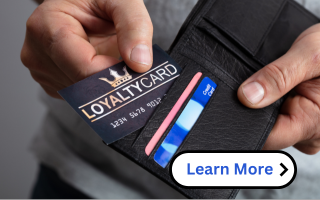What About Blog?
If you are a small to medium sized business owner, you may have a blog included in your current website. Everyone says blogging is great for my business and will drive traffic to my site! How does this work? What am I supposed to do? Writing a blog can appear to be complicated when you’re not sure exactly your supposed to be doing and what results you are looking to achieve. How much content needs to be there? What should it look like? How often should I blog?
Creating An SEO-Friendly Blog
 Wait a minute! What is SEO? Simply put it’s an acronym for search engine optimization and is the process used to get natural or organic traffic from search engines like Google, Bing!, Yahoo and others. Terrific “editorial” content encourages people to click on your stories, in turn proving to the search engines that your content is engaging and authoritative. While some are good at throwing words on a page and ideas flow naturally, others need some guideline to help us wade through what seem to be complicated writing techniques. Now that we’ve got that out of the way let’s look at some tips to create that blog post.
Wait a minute! What is SEO? Simply put it’s an acronym for search engine optimization and is the process used to get natural or organic traffic from search engines like Google, Bing!, Yahoo and others. Terrific “editorial” content encourages people to click on your stories, in turn proving to the search engines that your content is engaging and authoritative. While some are good at throwing words on a page and ideas flow naturally, others need some guideline to help us wade through what seem to be complicated writing techniques. Now that we’ve got that out of the way let’s look at some tips to create that blog post.
1. Think about what you’re going to write!
Is there a purpose to your text? Is there a question you want to ask your readers to think about? How do you want your readers to respond? Should there be a specific call to action for what you are going to write about? Best practice is to write these questions down and answer them before sitting down to write, those answers will help you focus your content on your questions.
2. Create a consistent structure for every post.
- Determine how you will format the introduction to your topic. Will it be a headline or possibly a short paragraph that previews the upcoming article, maybe even a slideshow of photos with captions? You are the industry expert, and it’s up to you to understand what type of content your users will engage with best.
- The body or main content of the blog should stay on topic and focused. If you need to change focus start a new paragraph. For instance, I like to try and keep paragraphs to no more than 150-200 words.
- Summarize your important ideas and create a strong call to action asking your reader to perform a particular behavior after reading.
- Are you going to use photos? How many? What will they be?
Now that you’ve determined the structure, the fun starts! Get to writing!
3. Paragraphs
Make sure when using paragraphs that your thoughts make sense and are complete. There’s no need to start a new line for the sake of vanity (making the page look nice), and new paragraphs should have a reason. Sticking to your paragraph’s topic or main idea will keep your writing flowing, and the reader should be able to grasp your main idea in one sentence. Need more sentences? Create additional paragraphs to explain further details in your content.
4. Headings
Headings have multiple uses but are critical in structuring your page. They make content easy to read and help with that dreaded SEO we spoke about earlier. These allow the search engines to grasp your main topics and serve results accordingly. Readers can also use headings and sub-headings to quickly scan your post looking for the sections that are most relevant to them. Make an attempt to sprinkle your keywords into some not all of those headings to boost SEO for those search terms.
5. Use transition words
Use of these types of words will help a reader quickly understand the main idea of your content. Here are some examples:
- You’re writing about the three main reasons someone should choose your product/service; In the first place, secondly, and finally
- Give your reader a clear signal of your expertise or superior product with terms like; definitely, surely, indeed
- Make a clear conclusion using; in summary, therefore, in closing
These transition words are important to giving your content structure and readers a clear, concise direction.
6. Get a proof-reader
Before publishing ask for some feedback from a trusted resource. Do they understand the main idea? Can they help you correct grammar errors, typos, and sentence formatting?
7. Just how long should my article be?
The general recommendation for article length is a minimum of 300 words. While there may always be bits of information that take a little more or a little less, the general rule I like to use is somewhere around 750-1200 words. Not too long and not too short. Longer content allows for the use of multiple keywords, where shorter content allows the post to be more focused on a single search term. My rule of thumb is to mention the keyword or search term 4-6 times per 300 words.
8. Using links
You’re website already sets you apart as an authority in your industry, be sure to link to that historical content within your blog posts. Linking within your site to older relevant content adds authority to your newly published content on the same subject. Be sure to use this to your advantage, as readers may be interested in learning more. In this situation, I like to use product pages in my call to action so the reader can find more information about what I have written.
9. Schedule
Find a schedule that works for you and stick to it! If you’re posting multiple times a day, shorter content around that 300-word mark may be more appropriate as not to overwhelm your readers. I like a 2-3 time per week posting schedule that allows for some time to research new ideas and spend an appropriate amount of time writing and researching new content. Try to find a few categories and stick to those when you’re writing; it’s hard to be an expert on everything!
10. Use writing tools to become a better writer
No one can know everything about writing and hit the bullseye every time, that is why it’s important to find tools that work for you regarding ease of use and affordability. The two tools that I am extremely fond of are Yoast for SEO and Grammarly for correcting misspellings, incomplete sentences and proper word usage ( a personal proofreader). Both tools offer a free and paid version and are worth a test drive.
Class Dismissed
 In closing, this formula should provide you a great head start to creating SEO friendly blog posts each and every time. Blogging may seem like a lot of work, although it gets easier and faster every time you create a new blog post. Great content is where it’s at and leads to more readers, social media likes, and shares. No matter what approach you choose be sure you are creating EPIC content for your audience and the SEO friendliness will soon become second nature.
In closing, this formula should provide you a great head start to creating SEO friendly blog posts each and every time. Blogging may seem like a lot of work, although it gets easier and faster every time you create a new blog post. Great content is where it’s at and leads to more readers, social media likes, and shares. No matter what approach you choose be sure you are creating EPIC content for your audience and the SEO friendliness will soon become second nature.
If you need help with your web presence we have the tools and resources to help!



















